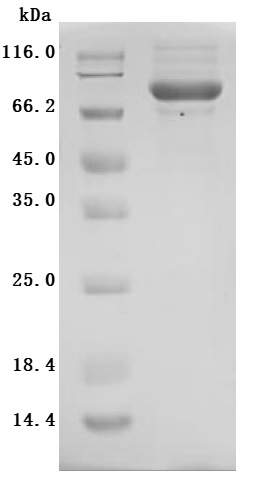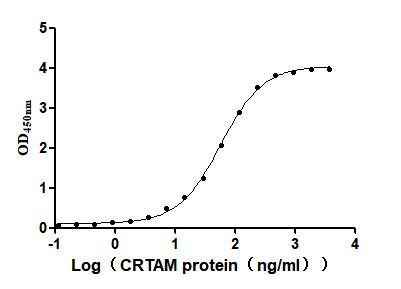Recombinant mouse Crtam is synthesized through a mammalian cell expression system. The gene fragment encoding mouse Crtam (17-289aa) is fused with a hFc-tag gene at the C-terminus and integrated into a plasmid vector. The recombinant vector is transfected into mammalian cells. Following transfection, protein expression is initiated through cell culture. The resulting recombinant mouse Crtam protein's purity surpasses 95%, verified using SDS-PAGE, and its endotoxin content measures below 1.0 EU/ug using the LAL method. Functionality is confirmed via binding assays with mouse Cadm1 (CSB-MP004425MO), with EC50 of 54.36 -61.77 ng/mL.
Crtam, an emerging immune cell receptor for NK cells, is crucial for the retention of CD8+ T cells and the differentiation of lymph node resident CTL effector cells. When the receptor Crtam expressed on NK cells binds with the ligand Necl-2 expressed on target cells, it enhances NK cell cytotoxicity. Blocking the Crtam-Necl-2 interaction with antibodies could help control the production of inflammatory cytokines. The Crtam receptor and Necl-2 ligand are highly conserved between mice and humans, with homology of 72% and 98% respectively. Developing active and stable Crtam protein can contribute to further exploration of the mechanism and signaling pathway of Crtam-CADM1 interaction, aiding in the development of therapeutic antibodies.





